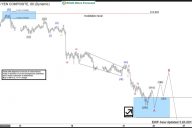Promises of additional monetary easing measures seem to arrive on a weekly basis, providing a boost to share prices globally as investors are encouraged to take on more risk. At the same time, we’re seeing increasing signs of a global slowdown. History has taught us that the “stock market is not the economy.” We are seeing perhaps the most extreme example of this today.
Global Easing
China is the latest country to join the global easing party, lowering its one-year benchmark deposit rate by 25 basis points to 2.75%. Back in June, the ECB moved to negative interest rates. Mario Draghi is ramping up his “whatever it takes” rhetoric leading most to expect some form of quantitative easing to be announced in the coming months. Here in the U.S., we’re approaching six years of 0% interest rates with the Federal Reserve continuing to promise to keep rates at 0% for a “considerable time.”
Japan’s central bank is now the exemplar of easing, having held interest rates near 0% for almost 20 years. Earlier this month, the Bank of Japan announced additional quantitative easing measures that included increased direct purchases of equities by the central bank.
With all of these easing measures in place, how is global growth faring? To get snapshot, let’s take a look at the top five global economies in terms of GDP: The U.S., China, Japan, Germany, and France.
China
China is showing its slowest growth since 2009, with year-over-year real GDP down to 7.3%.

China’s manufacturing index is down to a 6-month low, teetering on the edge of contraction (50 level).

Japan
Japan has entered its fourth recession since 2008, with year-over-year real GDP down to -1.2% and two consecutive quarters of negative growth.

Household spending in Japan is showing continued declines on a year-over-year basis.











No Comments